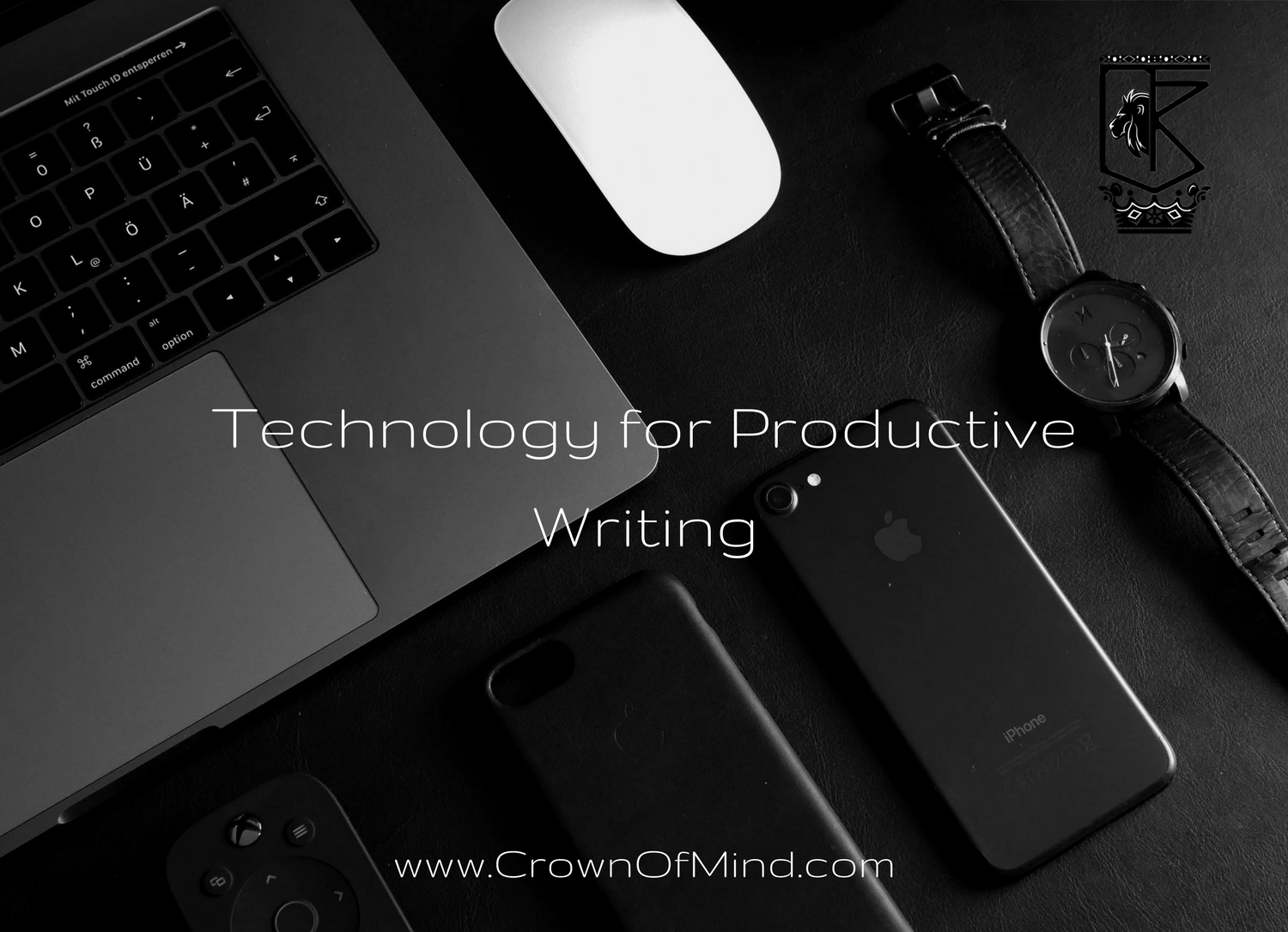There are numerous techniques for writing but what I find to be most challenging for people is the literal production; taking the ideas from the mind onto some medium that can be tangibly used.
It’s my observation that we generate many ideas daily; we’re constantly thinking so there isn’t an issue with generating thoughts. This is quite in abundance just by the nature of thoughts. We’re constantly interacting with the world, so we’re in a state of continuous stimulation. This stimulation is information, sensing, translated in some form through us. We also have a mind that is not the brain, with the brain being a physical house for the intangible capacity we call mind. Mind in itself has no limits to its capacity to conceive, limited only by the self-limiting blocks we elect (consciously or unconsciously) to harbor.
This is important to understand because it demonstrates how productive we could be with writing if we actually translated the many thoughts from this unlimited mind into word form (or another medium of one’s choosing). The skill to focus on is the translation method.
How About a Productive Prompt?
One method to tap into the mind throughout the day is to work with prompts. A prompt is a checkpoint, some element that brings awareness to some thing; when we’re prompted, we give our attention.
For writing purposes, a prompt is a technique for snapping us out of our continuous flow and to condense a thought into a form on paper.
Prompt Example: Describe how you felt waking this morning.
If you’re in the afternoon and have this prompt, you’re challenged to step out of your present moment and go into reflection about how your morning went with its associated feelings.
The prompt is most effective when it dives into your awareness as a surprise. When you know the prompt is coming, your mind is already going into an editing mode that begins considering options of what to write. So the prompt should be a surprise. This is where technology can be an asset.
For this kind of prompt, use your mobile phone. Open your calendar app and plug in a prompt statement for a specific time during your day. You can make several prompts throughout the day and choose the days you want to be prompted. When you’ve chosen them, select whether you want the prompts to be daily, weekly or monthly. Yearly is too long.
There you have it; writing prompts ready to alert you just like you would be prompted to go to a company meeting through your E-mail scheduler.
More Ways to be Writing Productive
App: Bear
Simply titled “Bear,” I’ve found this app to be clean, minimalist yet nuanced enough to offer writing customization. It boasts a clean interface that supports focus on the content instead of the “noise” of product marketing. If you notice, the higher the quality of product or service, the less slippery marketing it requires to stand out. A superior creation will need some marketing of course, but it can speak for itself. This one does.
I use this app when not writing in the idea pad, which we’ll soon cover.
App: Notes
This is the basic notes app. If you’re not moved to work with Bear, just open up your phone’s original notes application and begin writing.
And a note here: when you’re using these apps to write, focus less on the grammar and editing and more on the raw content. Phone typing tends to breed typos with even with very efficient writers and the screen’s size and navigation can slow you down if you backspace every few lines just to correct spelling. Unless this is your only digital source for writing, save the majority of your edits for the computer word processors.
App: Dragon Dictation
This app gives you the option to have your speech transcribed into words. Again don’t be concerned so much with the editing. The point is to increase your productivity by taking the thoughts from your mind and transferring them into a medium. Speak, allow your thoughts to flow and the app will convert the speech into words that you can retain and E-mail to yourself for further editing.
App: Voice Recorder
This is your basic voice recorder on the phone. Open it. Then start talking. When an idea arrives to you and you don’t have any of the writing mediums for your use, start recording and speak. You can save these as files, play them back and then write what you spoke. You’re the transcriber here.
The Idea Pad
By far my favorite (and likely most recognizable) tool is the little idea book. I purchase mine from Barnes & Noble. They’re easy to fit in coat and pant pockets so they can be carried just about everywhere. The same policy applies. For ideas that come to mind, I take it out and write even if it’s two sentences. Even if it’s a shape or symbol. Its meaning will bare fruit for you in time.
Capture your idea when the strongest inspiration touches (at that moment) because that’s when it’s most potent. This is the book’s size but not the color. I purchase the black leather pocket note from B&N and they sell for about $7.99.
The focus of this post is productivity and not totally on substance. This mode of creating assists you with producing volume and developing the habit of creating without feeling as if there are external restraints on your creativity. Whether you have an app, a book or a single page to work with, the power to bring forth ideas from the mind to the material world comes from within, and it needs to be cultivated.






